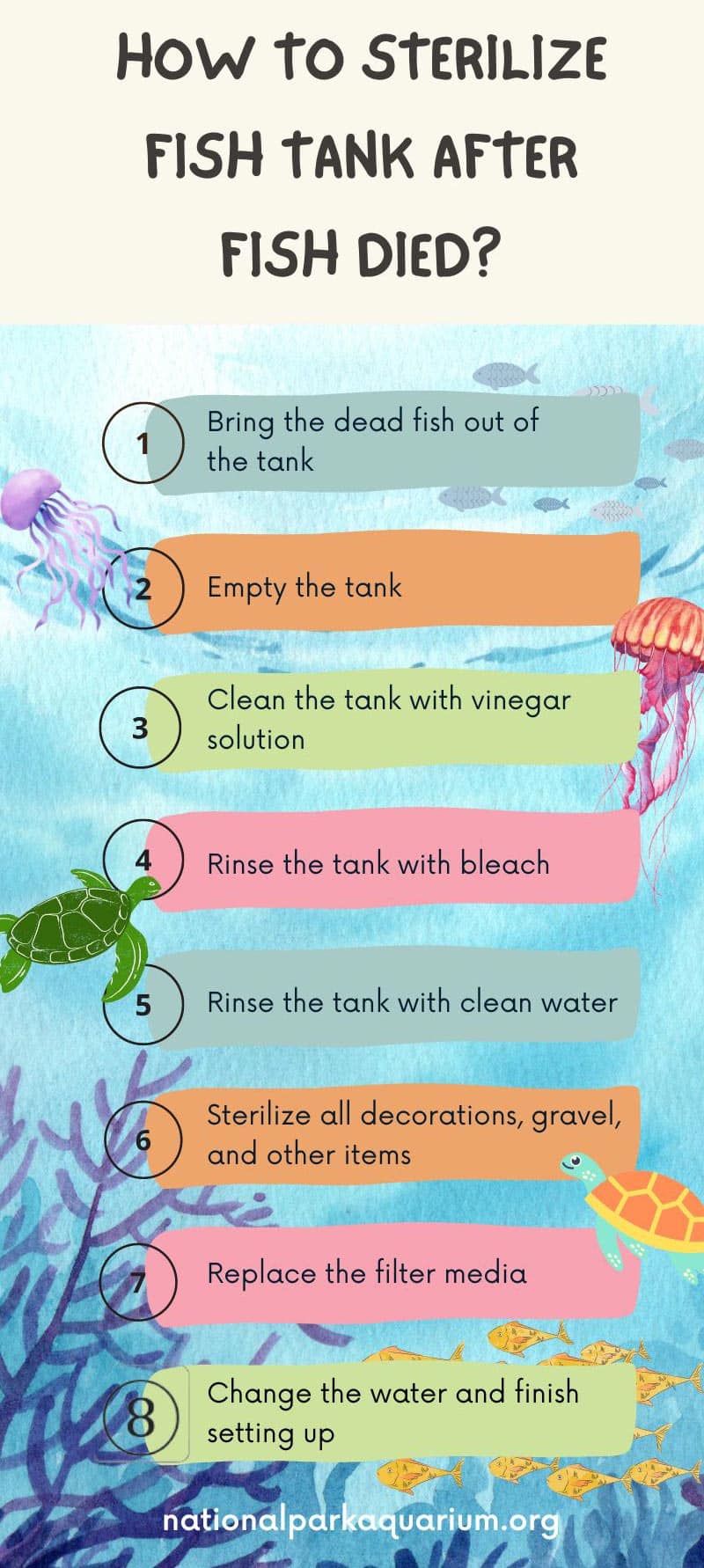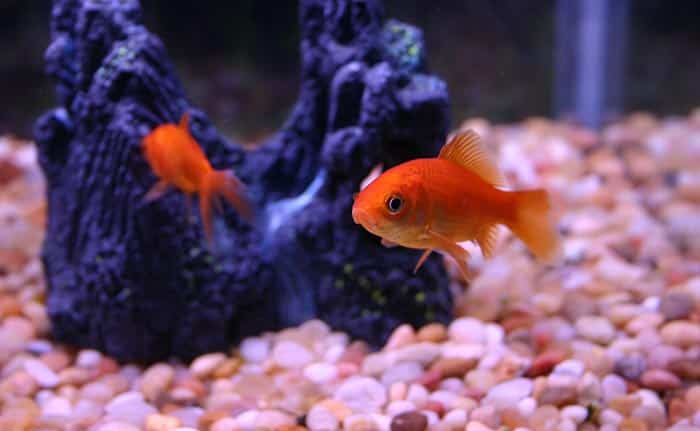Dead fish can cause a lot of problems in a fish tank, from polluting the water to attracting unwanted pests. Therefore, you need to act quickly to remove the dead fish and properly clean and sterilize your tank to prevent the spread of potential disease.
In this blog post, our show you how to sterilize fish tank after fish died. Read on for instructions to do it safely and effectively.

How to Clean a Fish Tank After a Fish Dies
What you need to prepare
- White Vinegar
- Bleach
- Clean Water
- A pair of rubber gloves
- A clean bucket
- A sponge or brush for cleaning
- Some clean paper towels
- A new filter media
Step-by-step to cleaning tank after betta fish died:
Step 1: Bring the Dead Fish out of The Tank
Extract the deceased fish from the tank at your earliest convenience. Employ a net to lift the fish out and then transfer it to a plastic bag for discarding.
Indeed, dead fish might not contaminate the water. However, you should not delay the task when noticing a dead fish floating in your tank because it might die of an infectious disease.
Step 2: Empty The Tank
Next, you should transfer any decorations, gravel, or other items from the tank to a bathtub or clean container.
You’ll need to sterilize and quarantine all of these items before putting them back in the tank.
Step 3: Clean the Tank With Winegar Solution
You can create a safe and effective cleaning solution by mixing 1 part vinegar with 10 parts water and using it to wipe down the inside of the tank.
This cleaner will remove any algae or other build-up from the tank’s walls.
Step 4: Rinse The Tank With Bleach
This step is necessary since we want to remove harmful bacteria from the water.
Mix a solution of 1 part bleach to 20 parts water and use it to rinse the inside of the tank.
Step 5: Rinse The Tank With Clean Water
Use fresh, clean water to rinse away any residual vinegar or bleach from the tank.
Be sure to completely rinse away all traces of bleach before moving on to the next step.
Step 6: Sterilize all Decorations, Gravel, and Other Items
You can soak these items in a solution of 1 part bleach to 10 parts water for at least 15 minutes.
Before adding them back to the tank, be sure to rinse them thoroughly with clean water.
Step 7: Replace The Filter Media
You might also want to check the fish tank’s filtration system to remove all the parasites living in the tank due to the dead fish.
Make sure to follow the instructions when replacing a new filter media.
Step 8: Change The Water and Finish Setting Up
Once you’ve sterilized the tank and its contents, you can add fresh, clean water and new fish. To avoid stress or shock, be sure to acclimate the new fish to their new environment.
What Happens If You Don’t Get The Dead Fish Out?
If you don’t remove the dead fish from your aquarium, you are risking the health of your remaining fish.
The dead fish in your tank will start to decompose. This process releases ammonia into the water, which can harm your other fish. Ammonia is a toxic substance that can cause respiratory problems and skin irritation.
The dead fish will also deplete the oxygen levels in the water, which can be fatal for your fish.

How Long does it Take for a Dead Fish to Decompose?
The decomposition rate depends on many factors, including water temperature, pH level, and the type of fish. In general, it takes anywhere from a few days to several weeks for a fish to decompose completely.
Should You Clean your Fish Tank After a Fish Dies?
Certainly, it is typically advisable to initiate the cleaning process for your fish tank following the demise of a fish. When a fish expires within an aquarium, it undergoes decomposition, releasing ammonia and various organic compounds. These substances have the potential to pose harm to the surviving fish and disrupt the overall water quality.
Will a Dead Fish Contaminate a Tank?
Promptly remove any deceased fish from the aquarium. Their bodies can rapidly decay in the warm, bacteria-rich water, posing a risk to the health of other tank inhabitants.
What Happens a While After a Fish Dies?
Once a fish dies, it no longer ingests dissolved oxygen (DO), and the air in its bladder begins to dissipate. Consequently, the fish sinks to the bottom. Over the next few days, the internal organs of the deceased fish decompose, producing gas. This gas eventually causes the fish to resurface and float once again.
Conclusion
Although it is unfortunate when fish die in a tank, it is necessary to clean and sterilize the tank before adding new fish.
By following these steps, you can help ensure that your fish tank is clean and sterile after a fish’s death. This will help reduce the risk of bacteria and other contaminants spreading in the tank and making your fish sick.
When looking at the task of cleaning, one must remember that it is a part of routine aquarium maintenance, which is crucial for a thriving aquatic ecosystem.
Have you had to clean and sterilize your tank after losing fish? What tips do you have to share with National Park Aquarium?




